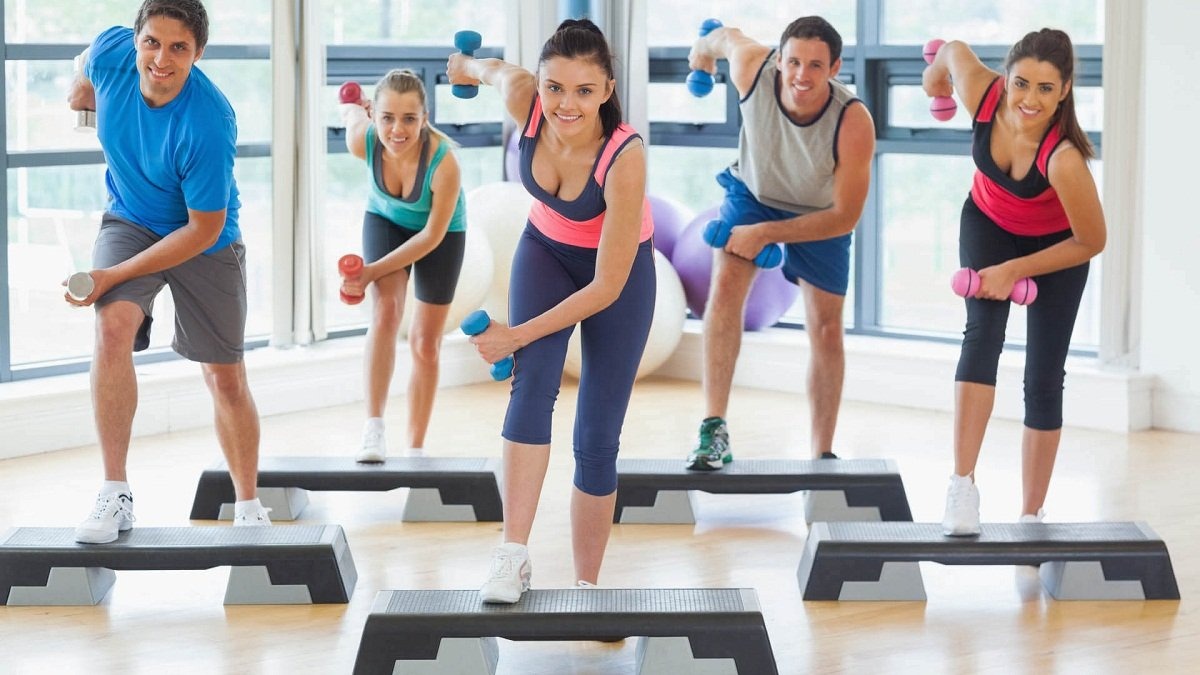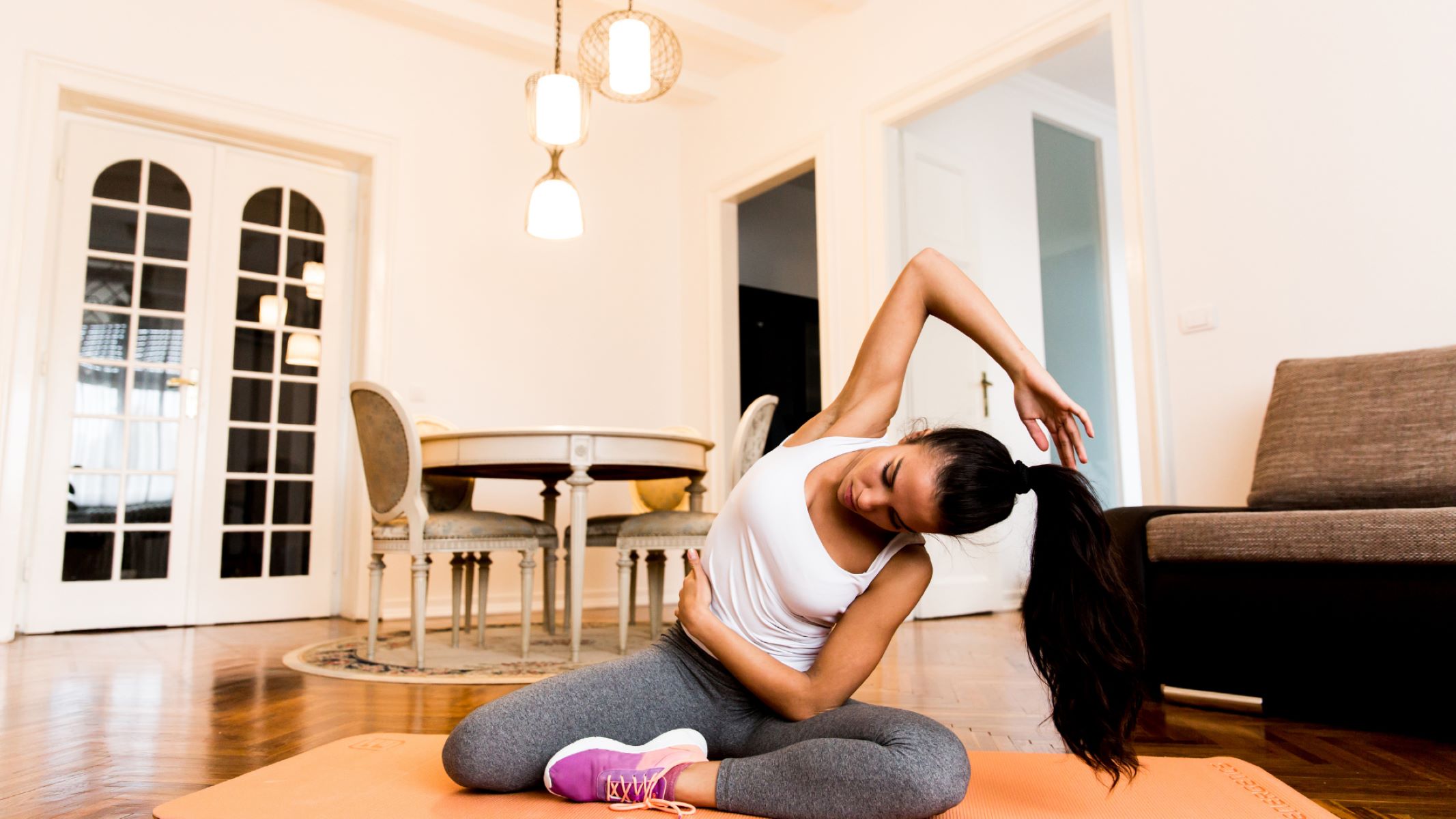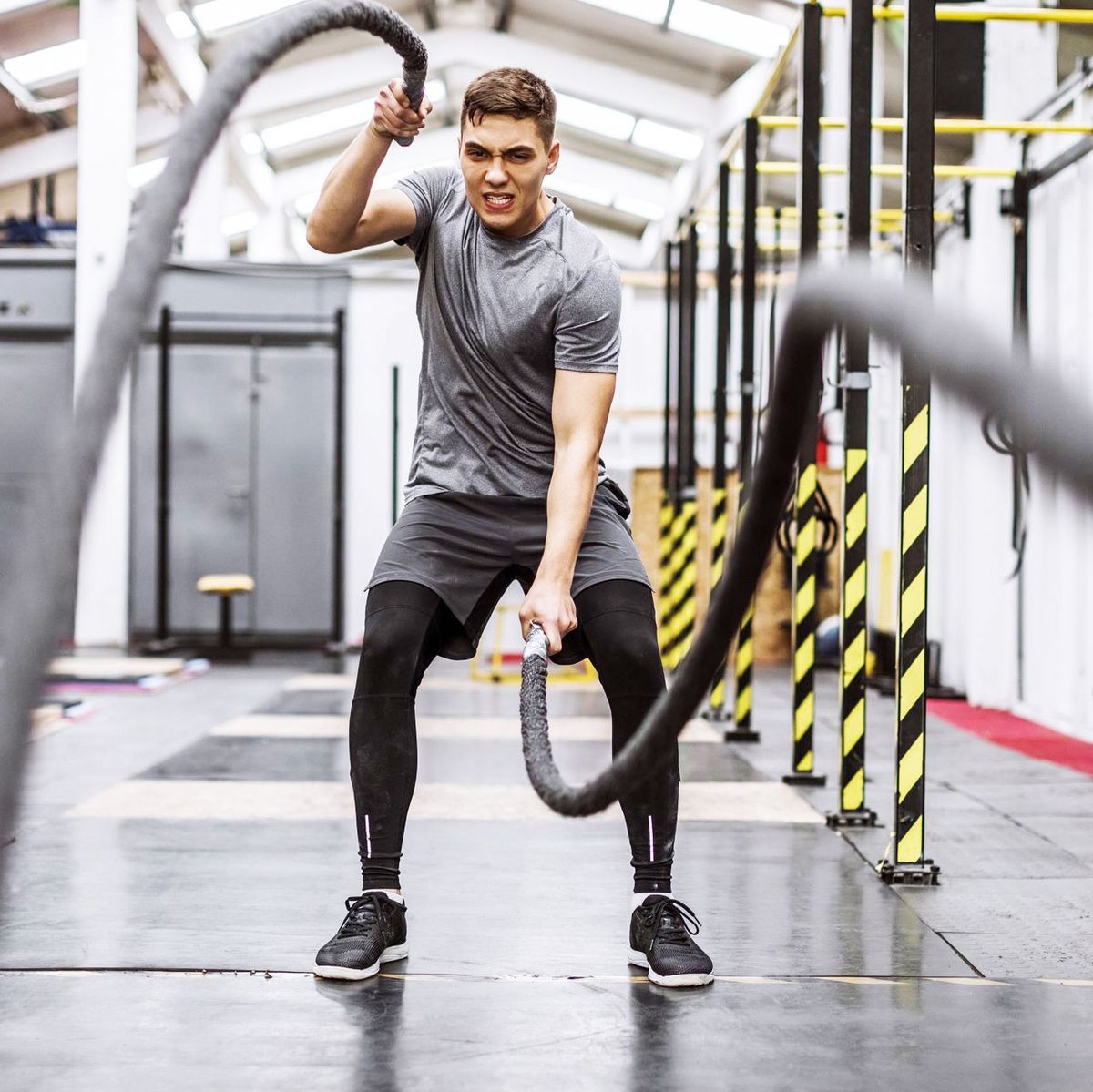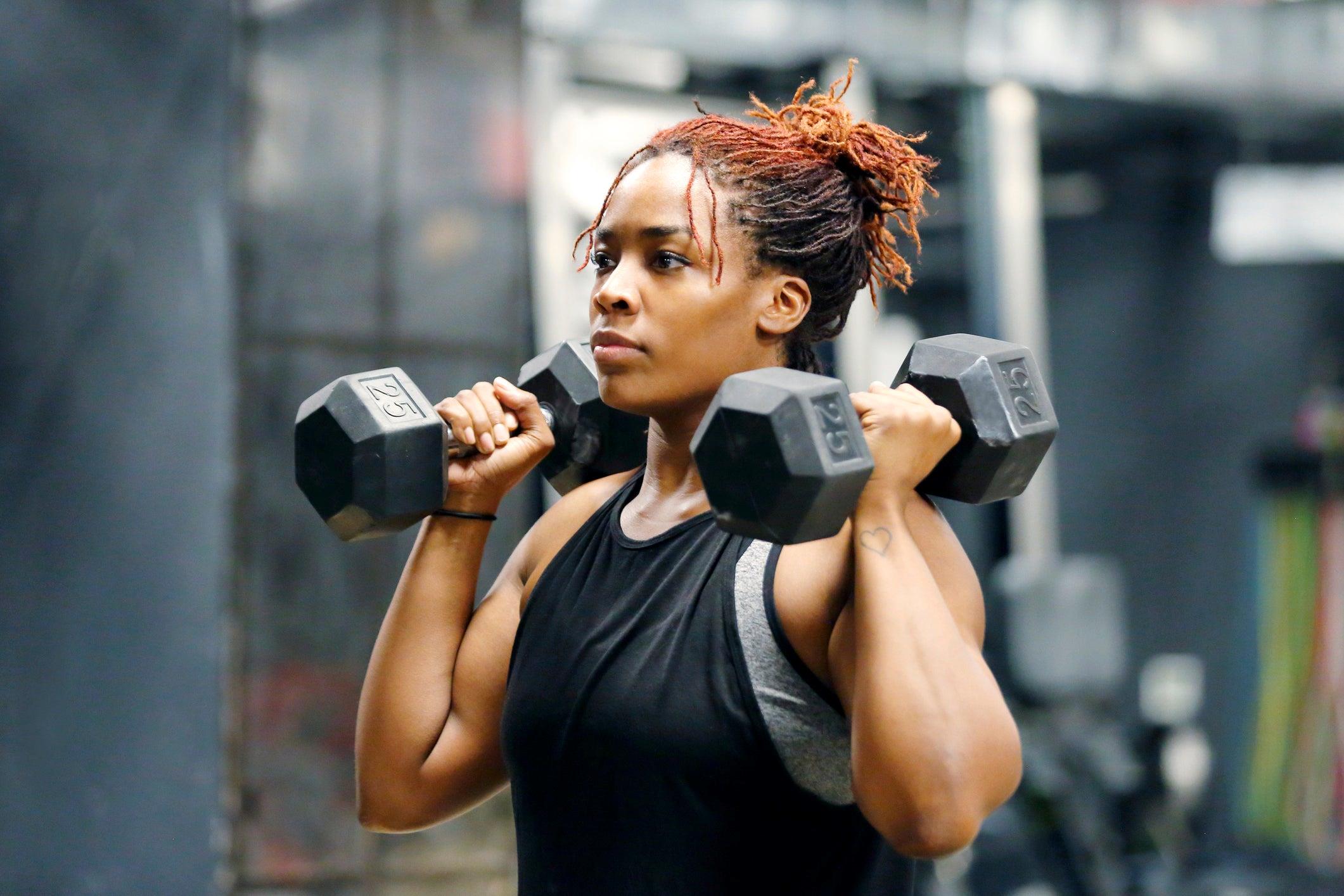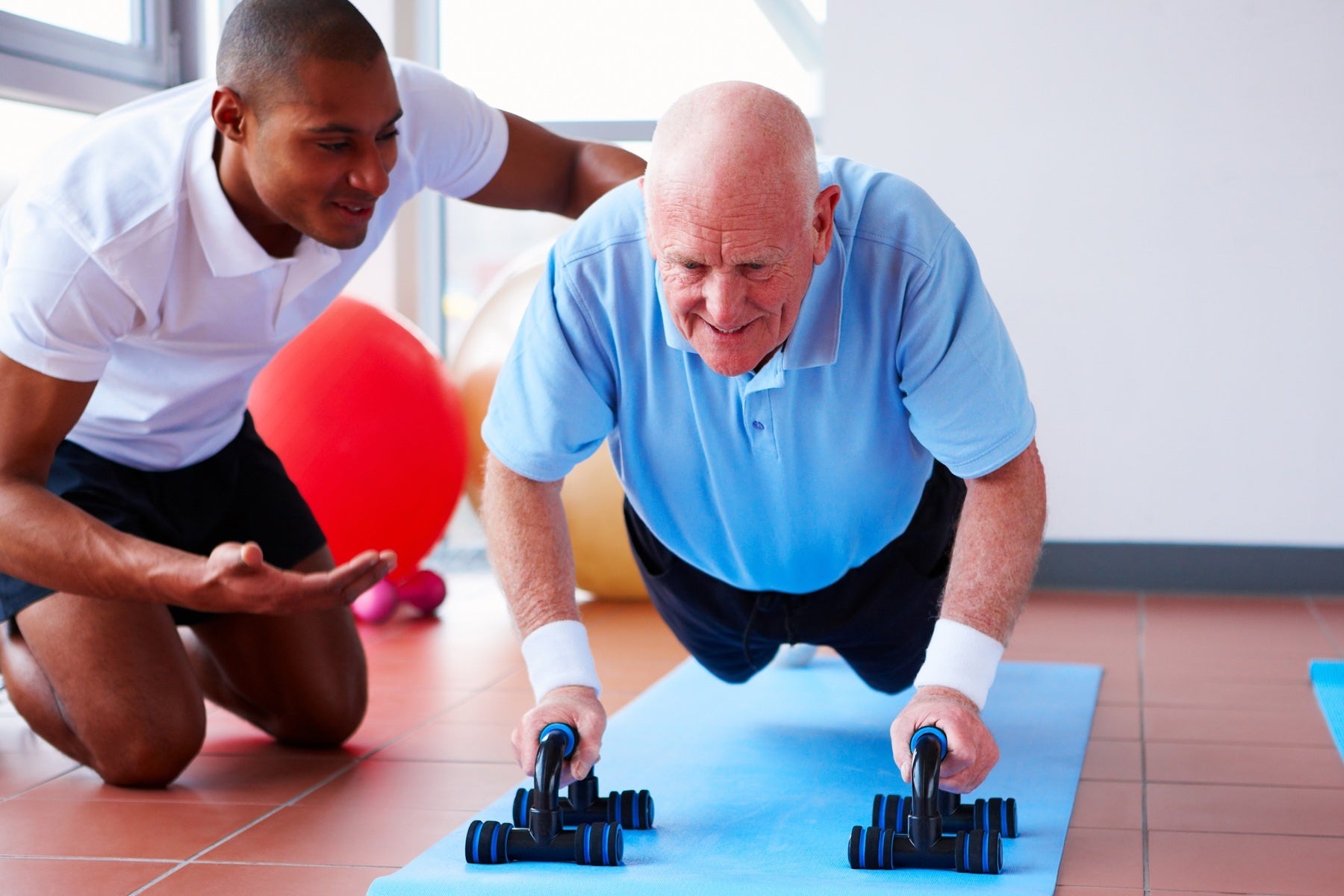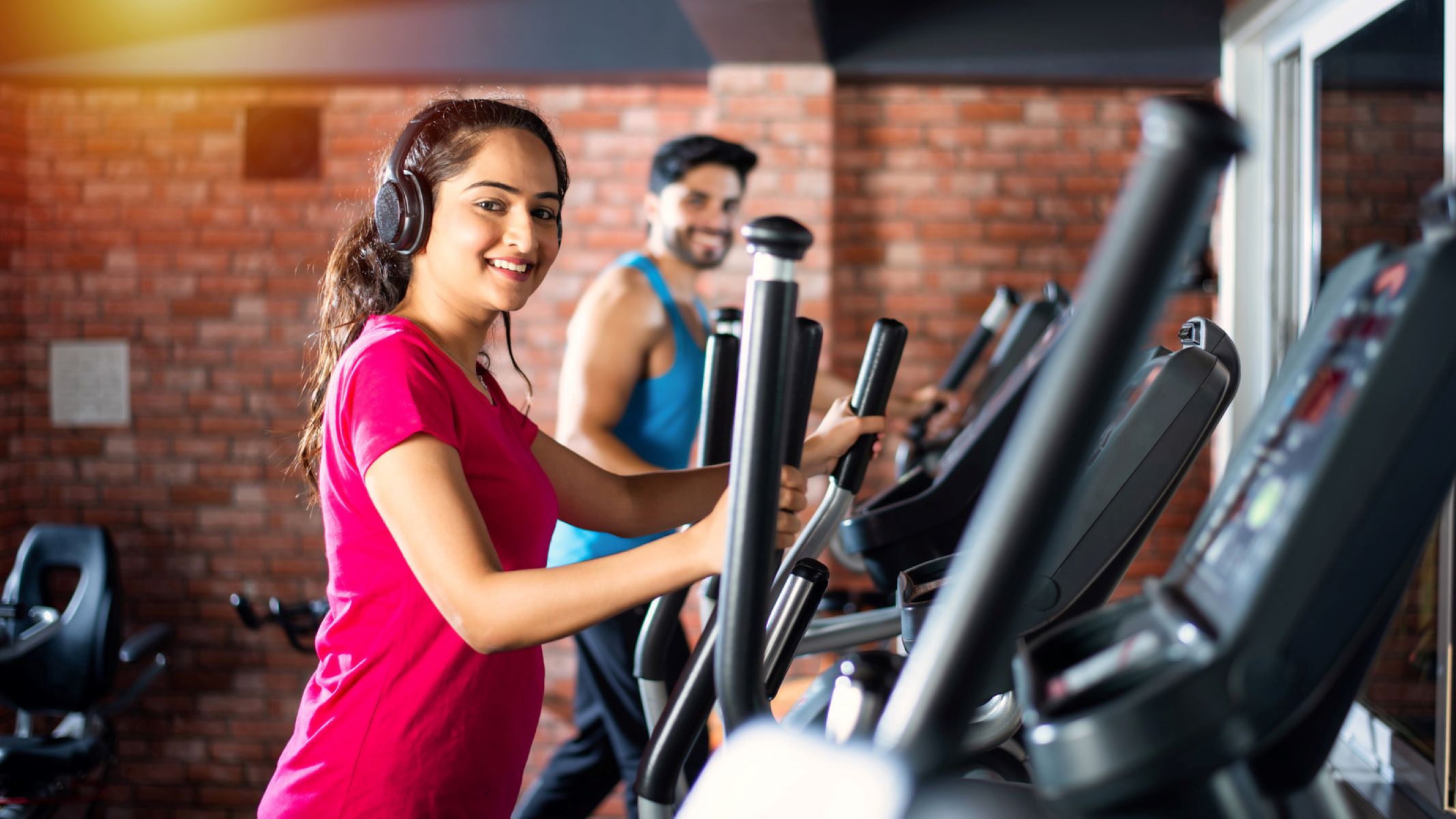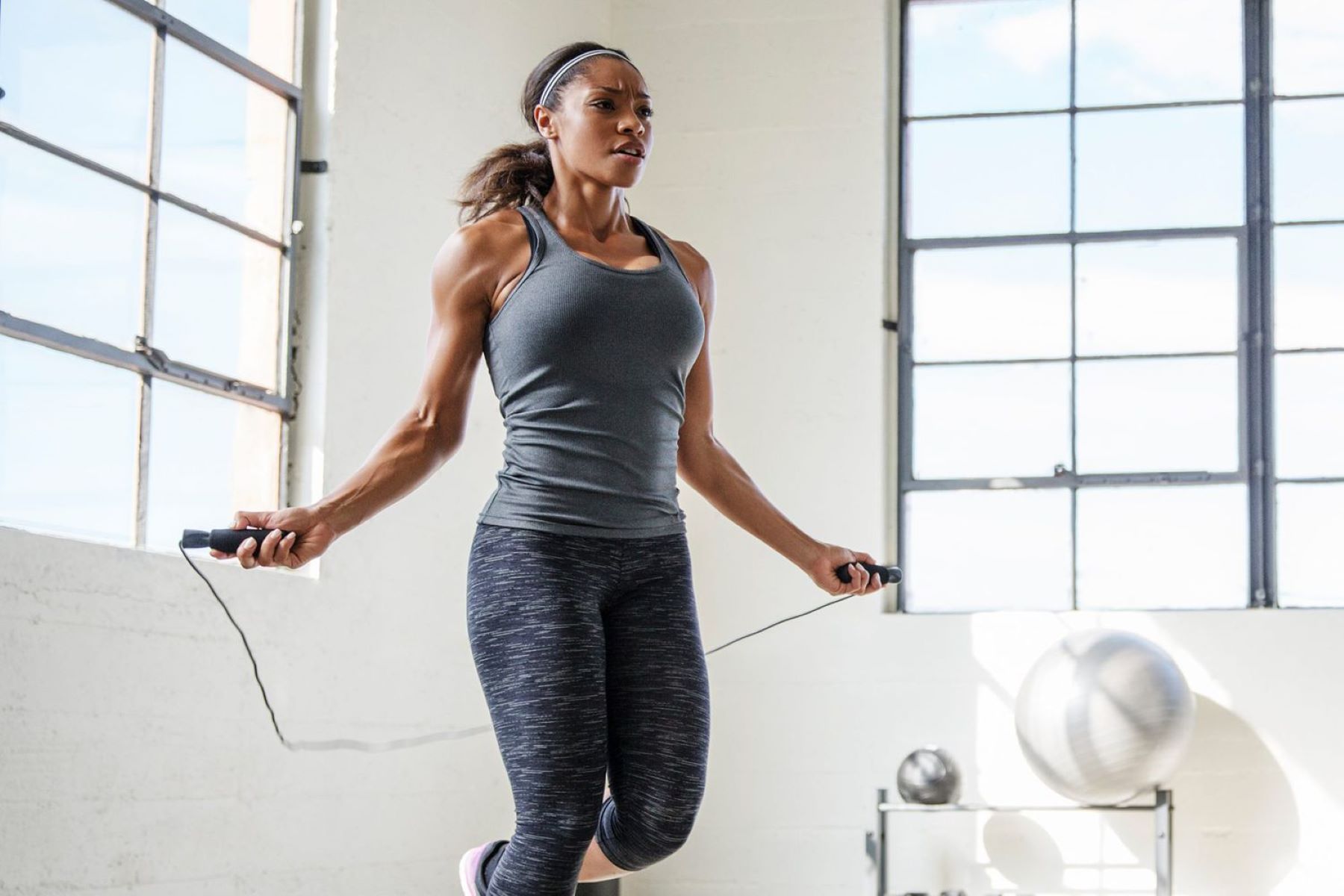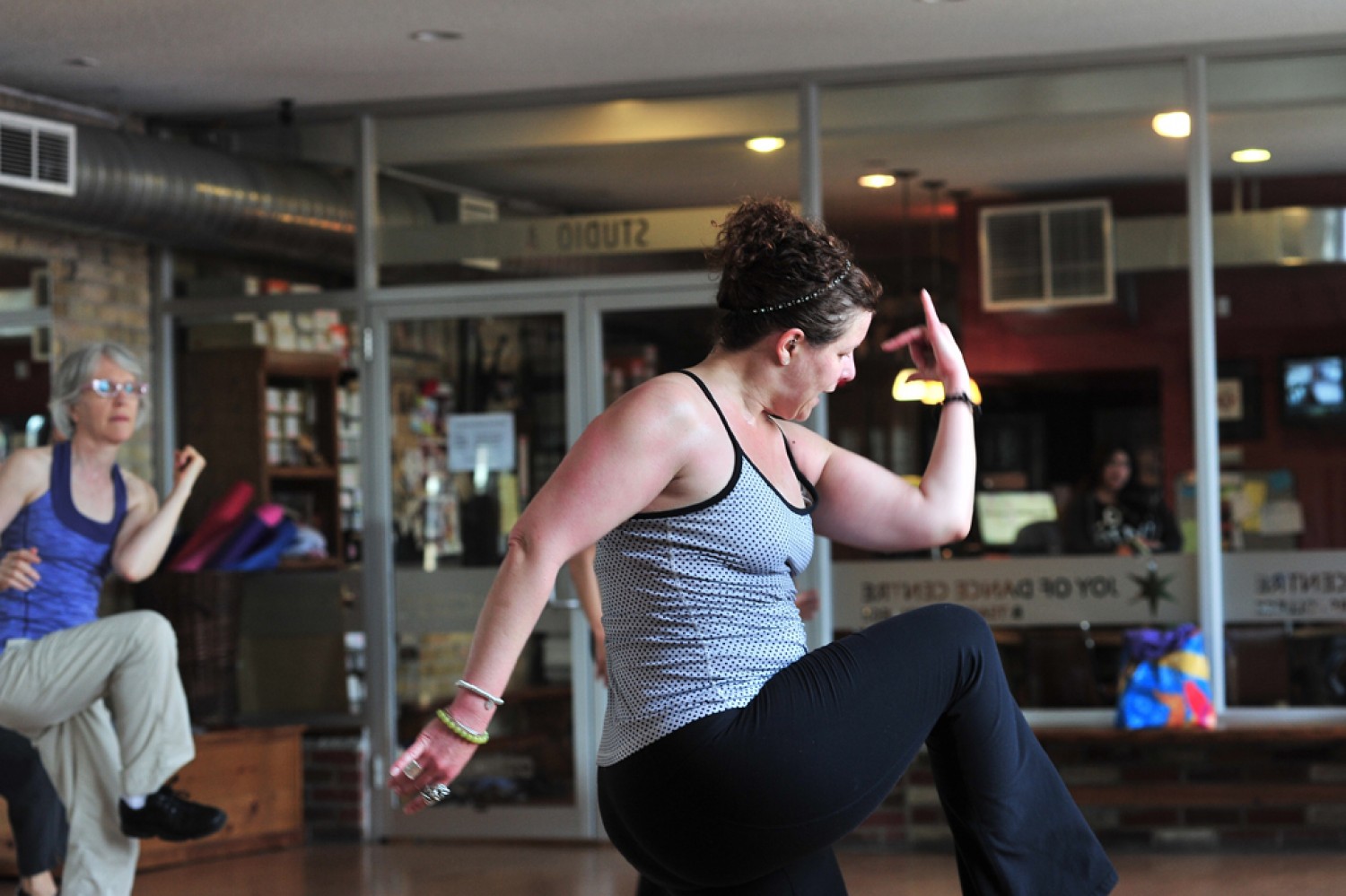

Featured
How To Increase Stamina For Dance
Published: October 15, 2023
Learn effective techniques to increase stamina for dance. Discover featured tips and exercises to boost your endurance and enhance your performance on the dance floor.
Introduction
Dance is a captivating art form that requires not only grace and technique but also a high level of stamina. Whether you are a professional dancer or an enthusiast, having stamina is crucial for delivering powerful performances and enduring long rehearsals. Stamina is the ability to sustain physical exertion over an extended period of time, and in dance, it is the key to maintaining energy, precision, and expressiveness.
The importance of stamina in dance cannot be understated. It allows dancers to execute complex movements with ease, maintain proper form, and engage in demanding choreography without succumbing to fatigue. Additionally, stamina plays a vital role in preventing injuries by ensuring that dancers maintain control and stability throughout their performances.
To increase stamina for dance, it is essential to follow a holistic approach that combines proper warm-up and cool-down routines, cardiovascular exercises, strength training, flexibility and stretching techniques, nutrition and hydration, rest and recovery, and mental conditioning. By incorporating these strategies into your dance regimen, you can effectively enhance your endurance and elevate your performance to new heights.
Importance of Stamina in Dance
Stamina is a vital component for dancers as it directly impacts their ability to perform at their best. Without proper stamina, dancers may find themselves struggling to maintain energy levels throughout their routines, leading to compromised technique and diminished expressions. Therefore, understanding the importance of building stamina in dance is crucial for dancers of all levels.
First and foremost, stamina allows dancers to execute complex movements with precision and finesse. As dance routines often require continuous and repetitive physical exertion, having adequate stamina enables dancers to perform these movements with ease and control. This not only enhances the overall quality of their performance but also minimizes the risk of injuries that may arise from fatigue or loss of control.
Furthermore, stamina plays a significant role in endurance during longer performances or rehearsals. Dance performances can be physically demanding, requiring dancers to sustain high-intensity movements for extended periods. By improving stamina, dancers can endure these demanding routines without experiencing a noticeable decline in performance quality.
In addition to the physical advantages, stamina also contributes to the mental aspects of dance. Dancing requires focus, concentration, and mental acuity. When dancers have sufficient stamina, they are less likely to experience mental fatigue, which can hinder their ability to remember choreography, execute complex movements, or maintain emotional expressiveness throughout a performance.
Moreover, building stamina in dance promotes overall physical fitness and health. Regular cardiovascular exercises, strength training, and flexibility work, which are essential for stamina building, help dancers improve their cardiovascular health, build strength and endurance in various muscle groups, and maintain proper flexibility, all of which are crucial for injury prevention and general well-being.
Overall, stamina is vital for dancers as it enhances their ability to perform complex movements, sustain energy levels, improve endurance, prevent injuries, and maintain mental focus. Developing stamina is an ongoing process that requires consistency, dedication, and a comprehensive approach to training.
Proper Warm-up and Cool-down
One of the fundamental aspects of increasing stamina in dance is the incorporation of proper warm-up and cool-down routines. A well-executed warm-up prepares the body for the physical demands of dance, while a cool-down helps the body recover and prevents muscle soreness. These routines are essential for preventing injuries and optimizing performance.
During the warm-up phase, it is crucial to gradually increase the heart rate and warm up the muscles. This can be achieved through activities such as light jogging, jumping jacks, or dynamic stretching. Dynamic stretches, which involve moving parts of your body through a full range of motion, help increase blood flow, improve flexibility, and reduce the risk of muscle strains or pulls.
Furthermore, incorporating exercises that target specific dance movements during the warm-up can improve muscle memory and prepare the body for the demands of the routine. For example, if you are practicing leaps and jumps, include repetitive practice of these movements in your warm-up to activate the muscles and enhance stamina.
After the dance session, a proper cool-down routine is equally important. Cooling down allows the body to gradually transition from intense physical activity back to a resting state, reducing muscle tension and preventing the buildup of lactic acid, which can cause muscle soreness. Cooling down can involve gentle stretches and low-impact exercises, such as walking or light cardio, to gradually bring the heart rate and breathing back to normal.
Don’t underestimate the power of incorporating relaxation techniques, such as deep breathing or gentle yoga poses, during the cool-down phase. These techniques can help calm the mind, release tension, and promote overall well-being. Remember that a good cool-down routine helps the body recover faster, reduces muscle soreness, and prepares you for your next dance session.
By making warm-up and cool-down routines a regular part of your dance practice, you not only reduce the risk of injuries but also improve your stamina and overall performance. So, take the time to properly warm up and cool down before and after dance sessions, and you’ll reap the benefits in the long run.
Cardiovascular Exercises for Stamina Building
Cardiovascular exercises play a crucial role in building stamina for dance. These exercises, also known as cardio or aerobic exercises, increase the heart rate, improve lung capacity, and enhance overall endurance. By incorporating cardiovascular exercises into your dance training regimen, you can significantly improve your stamina and energy levels for prolonged dance performances.
There are various cardio exercises that you can integrate into your routine, depending on your fitness level and personal preferences. Running or jogging outdoors, using a treadmill, cycling, swimming, or taking dance-based aerobic classes are all excellent options to consider.
Interval training is particularly effective for stamina building. This type of exercise involves alternating between high-intensity bursts and short periods of rest or lower intensity activity. For example, you can sprint for 30 seconds followed by 30 seconds of walking or jogging, repeating the cycle for a set period. Interval training not only improves cardiovascular endurance but also mimics the energy demands of dance, where intense movements are often followed by moments of recovery.
It’s important to gradually increase the intensity and duration of your cardiovascular workouts over time. Start with shorter sessions and lower intensity and gradually build up to longer and more challenging workouts. This progressive approach allows your body to adapt and build stamina without overexertion or the risk of injury.
Incorporating cardio exercises into your routine will not only improve your stamina but also help with weight management and overall cardiovascular health. Aim for at least 150 minutes of moderate aerobic activity or 75 minutes of intense aerobic activity per week, as recommended by the American Heart Association.
Remember to listen to your body and choose exercises that you enjoy. If running is not your thing, try swimming or dancing to your favorite music. The key is to find activities that get your heart pumping and make them a consistent part of your training routine.
By regularly engaging in cardiovascular exercises, you will not only improve your stamina for dance but also experience enhanced overall fitness and endurance. So, lace up your sneakers, dive into the pool, or hop on a bike, and let the cardiovascular exercises propel your dance stamina to new heights.
Strength Training for Endurance
In addition to cardiovascular exercises, incorporating strength training into your dance training regimen is essential for building endurance. Strength training focuses on improving muscle strength, power, and endurance, allowing your body to withstand the physical demands of dance routines and movements.
Strength training exercises can include bodyweight exercises, free weights, resistance bands, or weight machines. It is important to target all major muscle groups, including the core, legs, arms, and back, to ensure balanced muscular development and overall stability.
When designing a strength training program for endurance, aim for higher repetitions and lower weights. This approach builds muscular endurance, as opposed to focusing on low repetitions with heavy weights, which primarily develops muscle strength and power. For example, performing exercises like squats, lunges, push-ups, and planks for multiple sets of 15-20 repetitions will help improve your muscular endurance over time.
Another effective strength training technique to enhance endurance is circuit training. This involves moving quickly from one exercise to another with minimal rest in between. By combining different strength exercises into a circuit, you challenge your heart and muscles simultaneously, improving overall endurance. An example of a circuit could be performing a set of squats, followed immediately by push-ups, lunges, and planks, with minimal rest in between each exercise.
Incorporating plyometric exercises, such as box jumps, burpees, or jump squats, into your strength training routine can also be beneficial for dance endurance. These explosive movements help develop fast-twitch muscle fibers and improve power and stamina.
Remember to properly warm up before strength training and focus on maintaining good form throughout each exercise to prevent injuries. If you are new to strength training, consider seeking guidance from a qualified trainer or participating in a strength training class to learn proper techniques and ensure safe and effective workouts.
Strength training for endurance not only helps you build the necessary muscle stamina for dance but also assists in injury prevention by improving stability and control. It can also contribute to better overall body composition, posture, and muscular tone.
Make sure to incorporate strength training exercises at least 2-3 times a week to see significant improvements in your endurance levels. Gradually increase the intensity and difficulty of your workouts as your strength and stamina improve, and remember to listen to your body and allow for proper rest and recovery between sessions.
By integrating strength training into your dance training routine, you will develop the muscular endurance needed to sustain demanding dance movements and performances, allowing you to push your limits and excel in your artistry.
Flexibility and Stretching Techniques
Flexibility plays a crucial role in dance performance and stamina. Having a good range of motion in your joints and muscles not only enhances your ability to execute dance movements with ease but also helps prevent injuries. Incorporating flexibility training and stretching techniques into your dance training routine can greatly improve your stamina and overall dance performance.
Static stretching is one of the most common and effective stretching techniques for improving flexibility. During static stretches, you hold a stretch in a specific position for a certain period, allowing the muscles to lengthen and relax. Focus on stretching all major muscle groups, including the hamstrings, quadriceps, calves, hips, and shoulders. Hold each stretch for 15-30 seconds and repeat each stretch 2-3 times.
Dynamic stretching is another valuable technique for dancers. Unlike static stretching, dynamic stretching involves moving parts of your body through a full range of motion. Dynamic stretches can help improve flexibility, increase blood flow, and warm up the muscles before intense physical activity. Incorporate movements such as leg swings, arm circles, or trunk rotations into your warm-up routine to prepare your body for the demands of dance.
In addition to traditional stretches, consider incorporating techniques that target the fascia and connective tissues, such as foam rolling or using a lacrosse ball for self-massage. These techniques can help release muscle tension, improve flexibility, and enhance overall mobility.
It’s important to note that while flexibility is essential, it should be balanced with stability and strength. Focus on maintaining proper alignment and control during stretches to avoid overstretching or straining the muscles. Gradually increase the intensity and duration of your stretches over time to gradually improve flexibility without causing injury.
Aside from traditional stretching techniques, consider integrating other forms of flexibility training, such as yoga or Pilates, into your routine. These practices focus on both flexibility and strength, helping to improve balance, core stability, and overall body awareness, all of which contribute to better dance endurance.
Consistency is key when it comes to flexibility training. Aim to stretch and improve your flexibility at least 2-3 times a week. Plan dedicated stretching sessions and incorporate stretches into your warm-up and cool-down routines before and after dance practice. By making flexibility training a regular part of your dance training, you will gradually increase your range of motion, reduce muscle tension, and improve your stamina and performance.
Remember to listen to your body and be patient with your progress. Flexibility improvements take time, so don’t push yourself too hard or force movements beyond your current capabilities. Celebrate small milestones along the way and enjoy the journey of becoming a more flexible and resilient dancer.
Nutrition and Hydration for Enhanced Stamina
Proper nutrition and hydration are essential factors in enhancing stamina for dance. The food and fluids you consume provide the energy and nutrients needed to fuel your body and sustain physical activity. By maintaining a balanced and nutritious diet and staying properly hydrated, you can optimize your stamina and support your overall dance performance.
Start by ensuring you eat a well-rounded diet that includes all the essential macronutrients and micronutrients. Carbohydrates are particularly crucial for providing the primary source of energy for physical activity. Opt for complex carbohydrates such as whole grains, fruits, vegetables, and legumes, which provide sustained energy release. Include sources of lean proteins, such as chicken, fish, tofu, or beans, to support muscle repair and growth. Don’t forget about incorporating healthy fats from sources like avocados, nuts, and olive oil for sustained energy and overall health.
Additionally, adequate hydration is key to maintaining stamina and preventing fatigue. Dehydration can negatively impact both physical and mental performance. Drink water throughout the day, aiming for at least eight cups (64 ounces) or more, depending on your activity level and sweat loss. It’s also important to hydrate before, during, and after dance sessions to replace fluids lost through sweat. If your dance practice is particularly intense or lasts for an extended period, consider incorporating electrolyte-rich beverages or sports drinks to replenish lost minerals.
Avoid skipping meals and prioritize eating balanced snacks or meals before dance practice. Fueling yourself properly before a session provides the necessary energy to sustain stamina and prevent energy crashes. Opt for a combination of carbohydrates and protein to provide a steady release of energy and support muscle recovery.
Timing is also important. Depending on your digestion, aim to eat a balanced meal or snack 1-3 hours before dance practice to allow for adequate digestion and absorption of nutrients. Experiment with different timing strategies to find what works best for you and your energy levels during dance sessions.
Furthermore, listen to your body’s hunger and fullness cues. It’s important to nourish yourself adequately but avoid overeating, which can lead to discomfort and hinder performance. Practice mindful eating by paying attention to portion sizes and eating slowly to allow your body to feel satisfied.
Lastly, don’t forget the post-dance nutrition. Aim to consume a source of carbohydrates and protein within 30-60 minutes after dance practice to replenish energy stores and support muscle recovery. Good options include a balanced meal or snack such as a protein shake, Greek yogurt with fruit, or a turkey sandwich on whole-grain bread.
By prioritizing proper nutrition and hydration, you provide your body with the necessary fuel and hydration to optimize stamina, energy levels, and overall dance performance. Experiment with different foods and hydration strategies to find what works best for your body and individual needs, and don’t underestimate the power of proper fueling for enhancing dance endurance.
Rest and Recovery for Improving Endurance
Rest and recovery are often overlooked but crucial components of improving endurance in dance. While it may be tempting to push yourself to the limit and practice every day, giving your body adequate time to rest and recover is essential for optimizing stamina and preventing burnout or injuries.
During dance practice, your muscles undergo stress and micro-tears occur. It is during the recovery phase that these muscles repair and become stronger. When you consistently deprive yourself of rest, your muscles do not have sufficient time to recover, leading to muscular fatigue and decreased endurance.
Incorporating rest days into your dance training schedule is vital. Rest days allow your body to recuperate, repair damaged tissues, and rebuild energy stores. On rest days, avoid intense physical activity and focus on gentle activities such as stretching or foam rolling to promote circulation and aid recovery.
In addition to rest days, ensure you are getting enough quality sleep. Sleep is a critical part of the recovery process as it allows your body to repair and regenerate. Aim for 7-9 hours of quality sleep per night to support optimal stamina and overall well-being.
Active recovery is another important aspect of rest and recovery. Engaging in low-impact exercises such as swimming, cycling, or gentle yoga on rest days can improve circulation, reduce muscle soreness, and promote overall recovery. These activities help to flush out metabolic waste and deliver oxygen and nutrients to your muscles, allowing them to recover more efficiently.
Furthermore, consider incorporating techniques such as massage therapy or foam rolling into your recovery routine. These techniques help release muscle tension, improve circulation, and alleviate muscle soreness. Additionally, taking regular hot baths or showers can help relax your muscles and reduce muscle tightness.
Remember, rest and recovery are not signs of weakness but rather integral parts of the training process. By allowing your body the necessary time to recover, you are setting the foundation for improved endurance and overall performance.
Additionally, taking care of your mental well-being is crucial. Mental fatigue can negatively impact physical performance. Incorporate activities like meditation, deep breathing exercises, or hobbies outside of dance into your routine to relax your mind and reduce stress levels. Prioritizing self-care practices will help you maintain a positive mindset and sustain your motivation for long-term dance endurance.
Ultimately, finding the right balance between training and rest is key to improving endurance in dance. Give yourself permission to take breaks, listen to your body, and prioritize recovery. By doing so, you will allow your muscles to repair, rebuild energy stores, and ultimately enhance your stamina and endurance for the long run.
Mental Conditioning and Focus
Mental conditioning and focus are integral aspects of improving endurance in dance. While physical training is crucial, developing mental resilience and concentration can have a profound impact on your stamina and overall performance. Here are some strategies to enhance your mental conditioning and focus.
Visualization is a powerful technique that can enhance endurance and performance. Take time to visualize yourself executing dance movements with precision, grace, and stamina. Visualize yourself overcoming challenges and maintaining energy throughout your performance. By mentally rehearsing success, you can build confidence and improve your ability to sustain your stamina in real-life dance scenarios.
Setting clear goals and intentions can also aid in mental conditioning. Establish both short-term and long-term goals to keep yourself motivated and focused. Break down bigger goals into smaller, achievable milestones. This approach will help you stay disciplined and committed to your dance training, even when faced with challenges or setbacks.
Practice mindfulness and staying present during dance sessions. By being fully present in the moment, you can better connect with your body, movements, and energy. Avoid distractions and truly immerse yourself in the dance experience. Cultivating mindfulness can help you conserve mental and physical energy, enabling you to sustain endurance throughout performances.
Developing a positive mindset and self-talk is crucial for improving endurance. Replace negative self-talk with positive affirmations. Encourage yourself, celebrate your progress, and focus on your strengths. Surround yourself with positive and supportive individuals who uplift and inspire you.
Managing stress is essential for mental conditioning and focus. Dance can be physically and mentally demanding, so it’s important to find stress management techniques that work for you. Explore activities such as deep breathing exercises, meditation, journaling, or engaging in hobbies outside of dance to relieve stress and maintain mental focus.
Building mental resilience requires perseverance and consistent practice. Challenges and setbacks are inevitable, but how you respond to them determines your endurance and performance. Embrace failures as learning opportunities and see obstacles as stepping stones to growth. Cultivate a mindset that views challenges as part of the journey rather than barriers to success.
Lastly, maintaining a healthy work-life balance is crucial for mental conditioning. Make time for rest and relaxation, as well as activities that bring you joy and fulfillment. Taking care of your mental well-being outside of dance will help you maintain focus and sustain your stamina during training and performances.
By incorporating mental conditioning strategies into your dance training, you can improve your endurance, focus, and overall performance. Remember that mental strength is just as important as physical strength when it comes to sustaining stamina in dance.
Conclusion
Building stamina for dance is a multifaceted process that requires a comprehensive approach. By incorporating proper warm-up and cool-down routines, cardiovascular exercises, strength training, flexibility and stretching techniques, nutrition and hydration, rest and recovery, and mental conditioning, dancers can significantly improve their endurance and elevate their performance levels.
Stamina is vital in dance as it enables dancers to maintain energy levels, execute complex movements with precision, and sustain performance quality throughout routines and rehearsals. It also plays a role in preventing injuries and supporting overall physical fitness and health.
Proper warm-up and cool-down routines prepare the body for physical demands and aid in injury prevention. Cardiovascular exercises, such as running, cycling, or swimming, help improve cardiovascular endurance, while strength training enhances muscular stamina and power.
Flexibility and stretching techniques increase range of motion, prevent muscle tension, and support overall mobility. Adequate nutrition and hydration provide the necessary fuel and replenishment for sustained energy and optimal performance.
Rest and recovery are essential components of stamina building. Allowing the body time to recover helps repair muscles and prevent fatigue. Mental conditioning and focus play a critical role in enhancing endurance by utilizing visualization, goal setting, mindfulness, and positive mindset techniques.
In conclusion, increasing stamina for dance requires a holistic and disciplined approach. By incorporating these strategies into your dance training routine, you can improve your endurance, elevate your performance, and achieve your dance goals. So, lace up those dance shoes, fuel your body with the right nutrients, take care of your physical and mental well-being, and watch your stamina soar to new heights.

